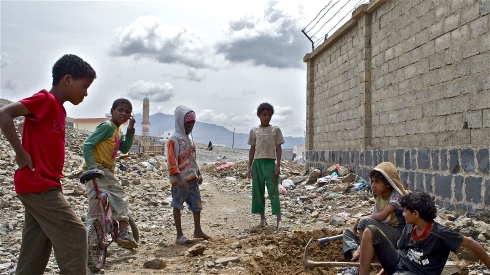
SANAA, (IRIN) – More than 1,500 Yemenis died in political conflicts in 2014, the most since 2011 uprisings which saw the deaths of some 2,000 protesters before driving the country’s long-time dictator from office.
After a negotiated transfer of power agreed in early 2012, the annual death toll dropped to about 1,100 and nearly halved again in 2013 to fewer than 600, according to the International Crisis Group.
The uptick in violence in 2014 is the result of a number of distinct but inter-related internal conflicts, many of which came to a head in 2014. The killings have also raised fresh doubts about whether the Red Sea state’s political transition will succeed.
What is behind the violence?
In 2011 Yemenis took to the streets inspired by other Arab uprisings to call for the resignation of their dictatorial president, Ali Abdallah Saleh, in power since 1978.
In November that year, after 10 months of mounting violence, Saleh agreed – on condition of full legal immunity – to hand over power to his deputy, Abd Rabbu Mansour Hadi, who then won a single-candidate election.
The government immediately deployed ground forces to reclaim territory from Ansar Al Shariah, a newly-formed affiliate of Yemen-based Al Qaeda in the Arabian Peninsula (AQAP), while the US stepped up unmanned drone attacks against Islamist militants.
A national dialogue process aimed to encourage all sides to talk. Yet the talks faltered, and a National Dialogue Conference (NDC) to redraft a failed social contract struggled. In January 2014 the NDC did, however, reach an agreement on the basis of a new constitution and regional autonomy.
Nevertheless, the chaos of 2011 has created a security vacuum which numerous armed groups exploited.
Of these, two in particular have benefited from the breakdown of the state. AQAP, based mostly in the southern and eastern provinces, has grown in influence, while the northern Houthi rebels have also taken the opportunity to claim control of new territory after withdrawing from the NDC.
After a controversial hike in fuel prices, in late September heavily-armed Houthi brigades stormed the capital Sana’a – taking over key ministries and media networks. Sunni Islamist AQAP, which has long been hostile to the Shia-Zaydi Houthis, has reacted to the power play with violence. Attacks on Houthi targets, including a series of car and suicide bombs, has further destabilized the country, with many Houthi casualties.
What has helped AQAP grow?
AQAP announced its formation in January 2009. US State Department estimates of the organization’s size have ranged from “a few hundred members” to “close to a thousand members” while noting that it is difficult to give accurate figures.
The group hit global headlines in December after two of their hostages, US photojournalist Luke Somers and South African teacher Pierre Korkie, were killed during a failed rescue attempt by US Special Forces.
In addition to the Yemeni armed forces trying to take on the militants, the US has been targeting AQAP in Yemen with unmanned drones. The high profile examples of civilian casualties caused by drones have proved controversial.
Investigative journalist Mohammad Al Moayad grew up in Hadhramaut Province which is now a centre of gravity for AQAP and specializes in the group’s workings.
He puts their growth partly down to their lack of willingness to compromise, which has helped increase levels of respect with many Yemenis. “Unlike their predecessors, AQAP and its new generation of leaders have succeeded so well in Yemen due [to] their uncompromising stance against the government,” he said. “AQAP did not negotiate with Saleh and they do not negotiate with Hadi. This discipline is reflected in AQAP’s determination to strike US soil, the Saudi Kingdom and anyone associated with the Yemeni government.”
Read more: Yemen: What next?
Source: IRIN


